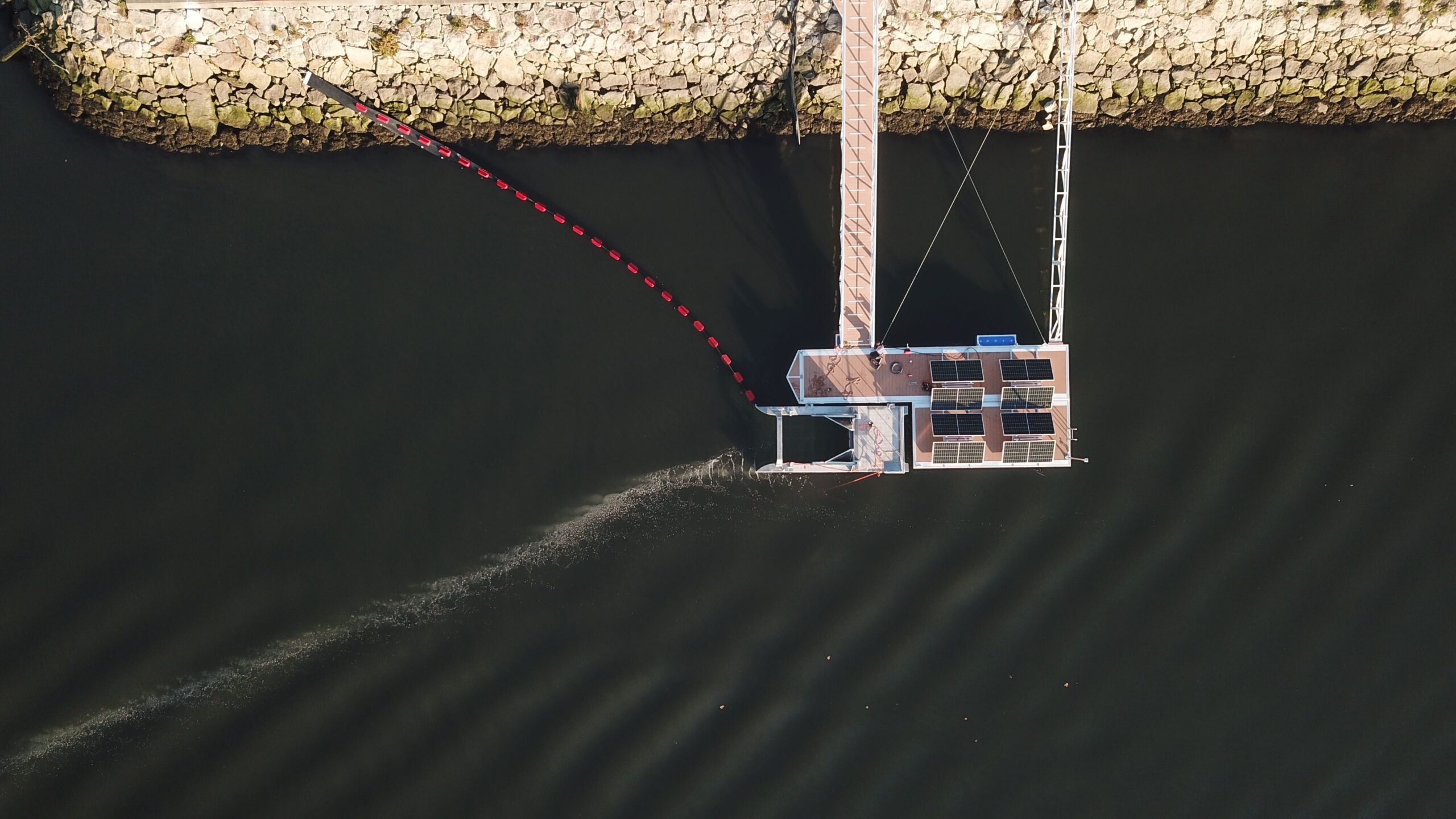MAELSTROM’s flash interviews #4 | Discover the Bubble Barrier Vila do Conde
On Saturday, November 25th, in Vila do Conde, Portugal, the launch event of our Bubble Barrier took place: an innovative technology for removing waste from rivers to prevent its entry into the sea and, consequently, accumulation in the oceans. This was a crucial moment for our project (there are many photographic testimonials on our social channels!), following the implementation of the Robotic Seabed Cleaning Platform launched in June 2023 in Venice. For its success, we truly must thank all the participants, and especially the Vila do Conde Municipality for their availability and for demonstrating so much proactivity in combating the problem of marine ecosystem pollution.
The Bubble Barrier system is designed not to disrupt fish or maritime traffic. It is co-powered by solar panels, designed and produced by the MAELSTROM partner Institute for Sustainable Energy of the University of Malta, to ensure renewable energy. Furthermore, to ensure its sustainability, CIIMAR, another partner of our project, conducted various environmental assessments.
The Bubble Barrier was developed by our Dutch partner, The Great Bubble Barrier, so we ask them, for our MAELSTROM’s Flash Interviews, to tell us how it works and explain some details!
What gave rise to the idea of a bubble barrier to stop litter in rivers? What was the inspiration for the development of this technology?
Three of the co-founders, Anne Marieke Eveleens, Francis Zoet and Saskia Studer, are lifelong sailors and friends who constantly came across plastic at sea on their sailing trips. When they were having a beer after one of their trips, they started mulling over ways to tackle plastic pollution. They dreamt of a solution that would target plastic but wouldn’t hinder ship traffic or fish migration. The bubbles in their drinks eventually sparked their imagination, their concept and prototype were awarded and soon they started testing and developing their first prototypes further.
At the same time, Philip Ehrhorn was developing his own Bubble Barrier in Germany. During a course in Environmental Engineering, he visited a wastewater treatment plant where he saw bubbles being used to aerate the water basin. The plastics that were flushed down the toilet, were pushed to the side of the basin. So, he wondered: ‘Why can’t we use the power of bubbles to capture plastic in rivers?’ Eventually, the four of them met. They decided to join forces and together, they co-founded The Great Bubble Barrier.
How long will the barrier be maintained in the Ave River?
The Bubble Barrier system in Vila do Conde will be operational from the end of 2023. The team of engineers from The Great Bubble Barrier are responsible for adjusting the system so that it is optimally calibrated for the highest plastic catch possible.
The Bubble Barrier Vila do Conde is the first project in an estuary. The results of the pilot will be evaluated after 1 year of operation. With this project, we aim to realise a standard design for more estuaries in the future.
The Bubble Barrier in Vila do Conde will be operational until at least the end of 2024, since the MAELSTROM project is executed within a limited time frame and aims to research long-term solutions, backed by research findings. The project focuses on research, which allows for 1 year of implementation, running and monitoring of the Bubble Barrier technology in this specific location.
The ultimate goal will always be to continuously capture and prevent marine litter, thus extending the Bubble Barrier project for a longer period of time in the Ave River. The Municipality will receive a report made by an independent auditor on the impact of the Bubble Barrier. If it is positive, the system will most likely remain in the water.
Of course, the Bubble Barrier is not the only possible tool to fight plastic pollution. Acting in synergy, various existing and/or developing technologies, including the Seabed Cleaning Platform developed within MAELSTROM, can help. But what specific characteristics might make the Bubble Barrier particularly suitable for a particular location? In other words, what characteristics of the river enable it to be successfully implemented?
The benefits of a Bubble Barrier are as follows:
- It covers the full width and depth of the river
- Ships can pass without obstruction
- It doesn’t hinder the passage of fish or marine life
- The system can be operational 24/7
In addition, our Bubble Barrier system has been proven to catch 86% of debris –items ranging from 1mm to 1m in size.
Can you tell us something about the future prospects of your work? Is it possible (as well as desirable), for example, for the barrier to be implemented in other areas of the world?
The Great Bubble Barrier would like to see our Bubble Barrier technology implemented across the world. In the short term, we hope to implement more Bubble Barrier projects in Europe, and in the long term, we hope to implement projects in Asia and other continents across the globe.
